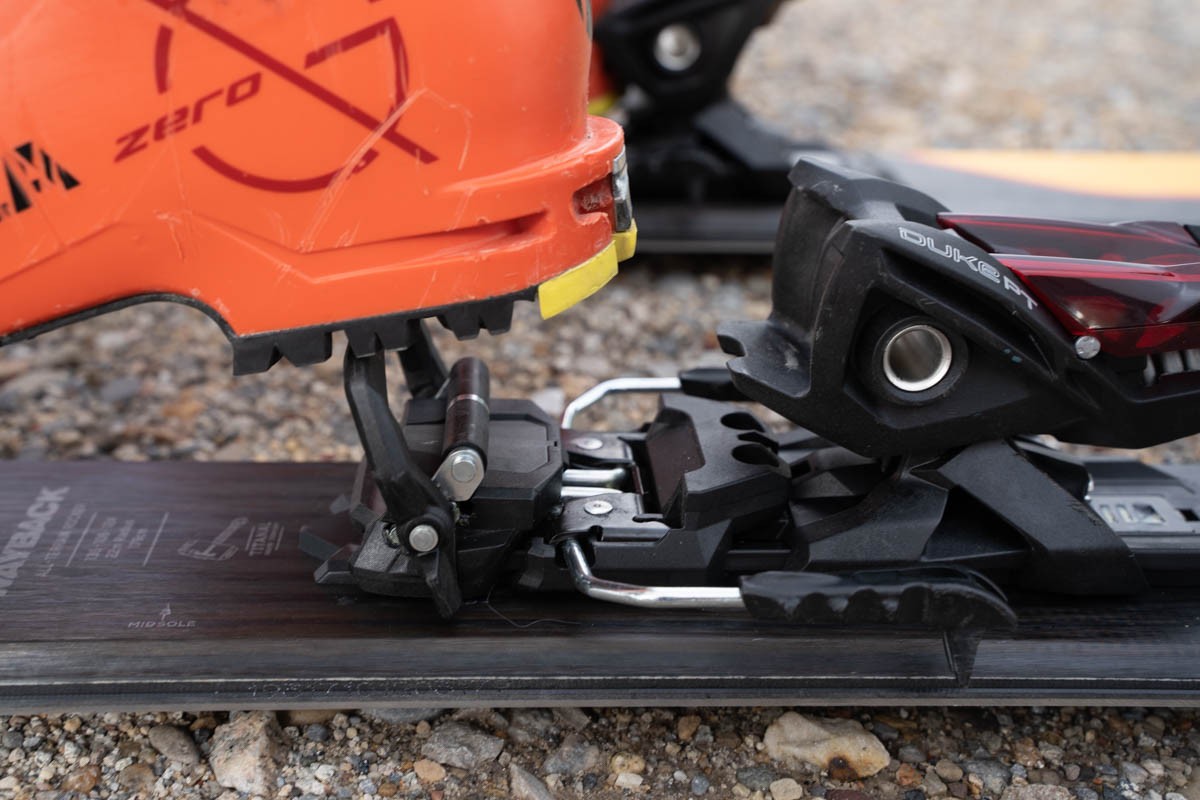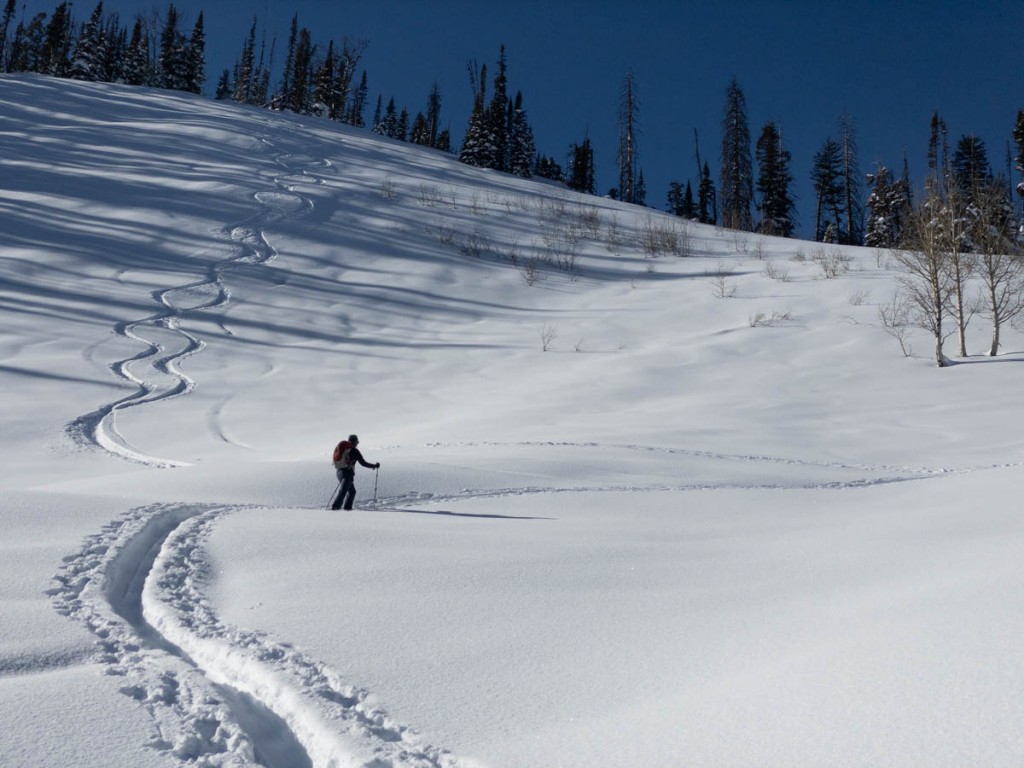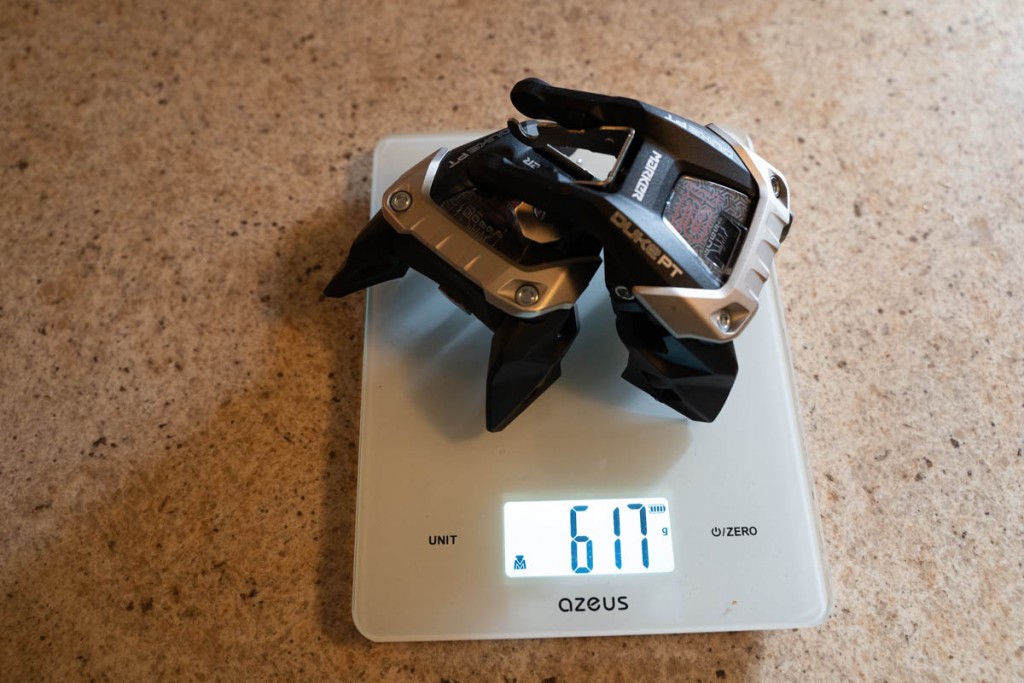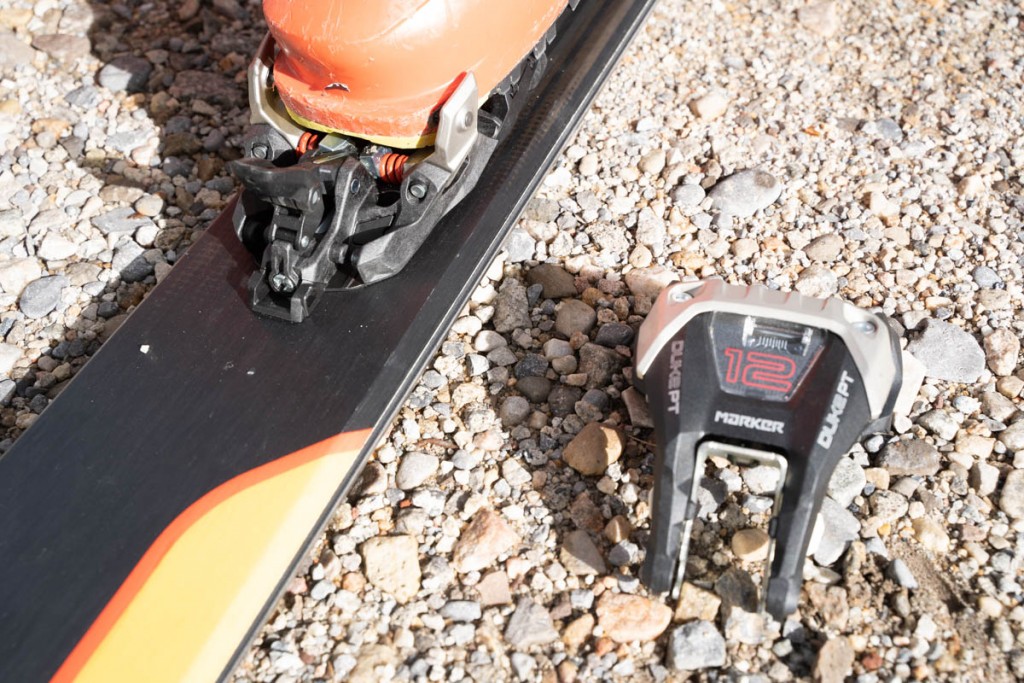Marker Duke PT 12 Review
Our Verdict
Compare to Similar Products
 This Product
Marker Duke PT 12 | |||||
|---|---|---|---|---|---|
| Awards | Best for Crossover Resort Use | The Best Overall AT Binding | The Other Best Binding | Best Ultralight Touring Binding | Best Bang for the Buck |
| Price | $499.95 at Amazon Compare at 2 sellers | $699.95 at Evo Compare at 3 sellers | $599.95 at Evo Compare at 2 sellers | $650 List $519.96 at Amazon | $280 List $279.95 at Amazon |
Overall Score  |
|||||
| Star Rating | |||||
| Bottom Line | Tours okay and skis downhill very well, it has all the downhill performance and design attributes you seek | A high-performance tech binding that incorporates every top-of-the-line feature at a very reasonable weight | This binding has a carefully tailored selection of the features you need while keeping weight to a minimum. The result is an excellent binding for any backcountry skier | Ultralight bindings with broadly adjustable release values | An affordable tech binding that has seen iterative improvements over the decades, yet remains reliable and highly durable |
| Rating Categories | Marker Duke PT 12 | ATK Raider 13 Evo | Salomon MTN Summit... | Dynafit Superlite 150 | Dynafit Speed Turn |
| Weight (35%) | |||||
| Downhill Performance (25%) | |||||
| Touring Performance (20%) | |||||
| Ease of Use (15%) | |||||
| Construction Quality (5%) | |||||
| Specs | Marker Duke PT 12 | ATK Raider 13 Evo | Salomon MTN Summit... | Dynafit Superlite 150 | Dynafit Speed Turn |
| Weight (pounds for pair) | 5.38 | 1.75 | 1.86 | 0.79 | 1.61 |
| Release Value Range | 4 to 12 | 5 to 13 | 6 to 12 | 4 to 13 | 4 to 10 |
| Brakes? | Integrated | Yes | Optional | Optional | No |
| Brake Width Options | 100, 125 mm | 86, 91, 97, 102, 108, 120 mm | 80, 90, 100, 110 mm | 75, 90, 105 mm | N/A |
| Weight of one binding and screws. Lightest possible configuration w/o brakes (in grams) | 1219 | 396.5 | 310 | 179 | 364.5 |
| Weight of 2 bindings Multiple options are noted where we have tested multiple options. (in grams) | 2438 (uphill mode is much lighter with toe piees in pack) | 793 | 843 (600 without brakes) | 358 (492 with adjustment plate) | 729 |
| Stack height: average of toe and heel pin height (in mm) | 42 | 40 | 38 | 36 | 37.5 |
| Toe/heel delta: difference in height between heel pins and toe pins (in mm) | 14 | 12 | 8 | 10 | 17 |
| Meets ISO/DIN Standard? | Yes | No | No | No | Yes |
| Ski Crampon compatible? | Yes. Marker Duke PT specific. | Yes. "Standard" style. Not all crampons will be cross-compatible | Yes. "Standard" style. Not all crampons will be cross-compatible | Yes. "Standard" style. Not all crampons will be cross-compatible | Yes. "Standard" style. Not all crampons will be cross-compatible |
Our Analysis and Test Results
Product Update - 2025
Going into the 2025 season, Marker updated the spring in their Inter Pivot Freeride Heel pieces. The IP3 heel is the basis of the Jester and is also used on the Duke PT. As a result, the release range of this binding increases to DIN 13, slightly higher than the 12-DIN version we reviewed. We expect the bindings to perform essentially the same, and will link to the newest version based on availability.
The Marker Duke PT is the latest offering in the binding business' quest to offer alpine binding performance to those that wish to tour into the backcountry. Backcountry AT binding design will always be a compromise between uphill and downhill. At the very least, lower weight helps going uphill while downhill performance attributes require parts with mass. On the spectrum, the Duke PT 12 sits on the downhill-optimized end. Recent binding developments have lightened up this end of the spectrum considerably and the Duke PT is a step further in that direction. Nonetheless, this is not a lightweight backcountry product; it weighs almost seven (!) times as much as the lightest binding we have tested.
Performance Comparison
Weight
The Marker Duke PT 12 weighs, on our scale, 1219 grams per foot. The lightest binding in our test is 1/7th that, at 181 grams. This is a huge, huge difference. You will notice this difference.
Interestingly, you will see the Duke PT advertised for its light weight. This isn't entirely disingenuous. As compared with the previous generation (and now largely out of date) of “frame bindings” (some of which shared branding with this exact binding), the Duke PT is indeed a weight savings. Don't be fooled; you can get much, much lighter backcountry ski bindings than this.
As compared to its closest, downhill-optimized competitors, the weight of the Duke PT deserves some closer analysis. On the surface, the close competitor is quite a bit lighter; 905 grams vs Duke's 1219g. However, in touring mode you can remove the toe piece of the Duke and carry it in your backpack. Yes, you still carry it. But weight on your feet is more draining than the same weight on your back. The option to move each 309g Duke toe piece to your backpack roughly equalizes the touring weight of these prominent competitors.
Downhill Performance
As compared to typical recreational skier resort bindings, there are (almost) no compromises to downhill performance with the Duke PT. It is fair to surmise that Marker made this binding guided by a goal to make a resort binding that could be pressed into touring. The performance we experienced confirms this.
With the Duke PT, in downhill mode and terrain, you get the certification, boot compatibility, release value adjustments, and binding elasticity you expect of resort bindings. There are race and pro-level resort bindings that are better for downhill, but few of us need that performance, especially in the backcountry. Those that truly need optimal downhill performance with the ability to tour a little bit will get what they need from the Duke PT. Most others, though, will not need all the downhill performance of the Duke. It is overkill for most of us. This is good for the truly charging downhiller.
Touring Performance
In assessing touring performance we examine range of motion, heel lifters, and icing propensity. As compared to dedicated touring bindings, the Marker Duke PT 12 suffers greatly. The toe range of motion is compromised, all the moving parts are prone to extensive icing and the heel lifter is limited and difficult to deploy. On the other hand, as compared to other downhill-optimized touring bindings, the Duke performs pretty well.
The biggest touring performance advantage of the Duke PT, as compared to downhill-optimized touring bindings, is the toe range of motion. For uphill travel, the downhill toe piece of the Duke moves entirely out of the way. You can even remove it entirely and put it in your backpack if you wish. This leaves a ton of room for your foot to make nearly full pivot range of motion. As compared to its closest competitor in this way the Duke PT is much better. As compared to balanced or touring optimized bindings, the Duke PT has a little less range of motion. In the other touring performance attributes (icing, heel lifters) the Duke PT is very similar to its closest competitors.
Ease of Use
To accomplish their design goals, Marker had to compromise ease of use with the Duke PT. Transitions are complicated, usability attributes are secondary to downhill performance, and normal function (especially uphill) is a little fiddly.
Transitions require removing your boot entirely and at least pivoting (if not entirely removing) the toe piece out of the way. Stowing the brake for uphill travel is a little finicky. For some testers, especially at first, transitioning the ski brake required removing gloves. Accessing the one heel lifter lever requires dexterity and reach and flexibility. Our test team learned of another user that inadvertently left their downhill toe pieces behind on a tour and didn't notice this until the top of their run. Forgetting or losing a part of your binding is something that owners of any other touring ski bindings never need to worry about (split boarders can have this happen; one of their many burdens to bear…).
Construction Quality
The Duke PT is relatively new. We had it in action for most of one season and had no problems with it. A survey of other online reviews, dedicated users, and mountain guides suggest no major patterns of issue. Especially as compared with our first season in the Duke's closest competitor, we are pleased with the durability of the Duke PT.
We expect resort bindings to be pretty reliable. We also expect heavy gear to last pretty well. On the other hand gear with many moving parts and gear that is newly on the market is automatically suspect. We will keep testing the Duke PT, while keeping our ears to the ground, to draw out any patterns of unreliability.
Should You Buy the Marker Duke PT 12?
You might be drawn to these bindings for their “2-in-1” value promise. You might be seeking the “quiver of one” for resort and backcountry use. That could work for you if your resort:backcountry ratio is upwards of 10:1. These are definitely downhill optimized bindings. For extended, dedicated human-powered backcountry skiing, the weight and usability compromises of the Duke PT will greatly affect your experience in a negative fashion. Be very, very cautious in your expectations of saving money with the Duke PT. There are better ways to reduce the cost of your ski experience.
What Other Backcountry Ski Bindings Should You Consider?
The Duke PT is Marker's effort at creating a no-compromise downhill binding that can tour. It doesn't tour well or efficiently, but it tours. If you're already spending the money on this type of binding, it's well worth considering what you might gain by opting for a full-function touring binding like the Dynafit Ridge.

















